Myths Debunked (14): More Lumens DON’T Make a Better Light
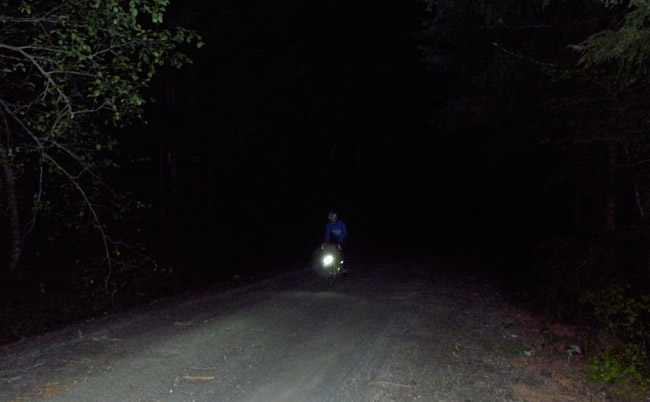
As the days get shorter, many cyclists are thinking about lights. How do you measure the quality of a headlight? It’s tempting to look at how many lumens the light puts out. After all, brighter is better, isn’t it?
On the road, what matters is not lumens, but lux. What is the difference?
- Lumens looks at the source: How much light does the headlight emit? In other words: How bright is the light when you look at it?
- Lux looks at the result: How much light arrives on a given surface area of road? In other words: How well does the light illuminate the road surface.
- Lumens can be expressed as a simple number, but lux depends on where you measure it. This makes lumens easy to measure, while lux are difficult to quantify.

The illustration above shows a typical high-powered bicycle headlight. The circle on the left is the wall projection of the beam. The side view shows where the light is going. The plan view illustrates how many lux arrive on different parts of the road surface.
The headlight above has an impressively bright spot with a lot of lumens. But when you look at the road surface, you see that not much of that light arrives on the road. The symmetric beam shines almost half the light into the sky, and there isn’t enough left to illuminate many parts of the road. In addition, you are blinding oncoming traffic, which isn’t just a bother, but can be dangerous on narrow roads. Drivers who can’t see the edge of the road steer toward the center — toward you.

What if you orient the beam downward? Now you have a super-bright spot right in front of the bike. That works well for mountain biking in tight singletrack, at low speeds, where you only need to see what’s right ahead of your bike. On the road — even on gravel — it’s not ideal: The bright spot makes it difficult to see into the distance. Your eyes adjust to the bright illumination, and you can’t see the darker road surface ahead.
It’s like walking out of a brightly-lit room at night – you can’t see until your eyes have adjusted to the darkness. On the bike, the bright spot prevents your eyes from adjusting to the darkness. You feel like you’re peering through a layer of fog. It’s difficult to see the darker road surface in the distance.
This is especially tiring when descending mountain passes, where you need to see far ahead. In the city, you can’t see potholes, debris and other obstacles until the last moment.

If we make the beam square and even, it gets better, but we’ve fixed only part of the problem. The wall view looks great, but looking at the side view, you notice that the beam hits the ground at different angles: steeper near the bike, shallower further away.
The dashed lines split the beam into thirds. Notice how the lower third illuminates about 15% of the road surface, while the upper third spreads its light over a much greater area (~50%). With an even beam, the area in front of the bike is three times brighter than the distant road surface. You’re still peering through that fog of brightness.
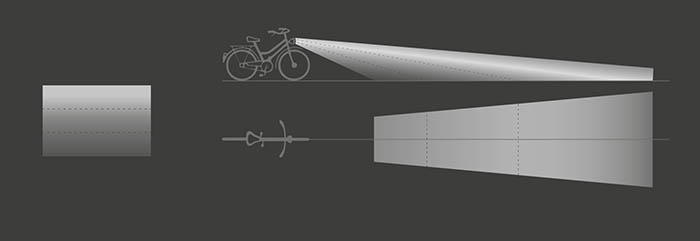
Car headlights use a layered beam to solve this problem. The same technology is found on the SON Edelux II headlight. The wall projection (left) shows how the light intensity increases upward. This compensates for the different angles at which the beam hits the ground (side view): The lower portion of the beam is darker, because it illuminates less of the road surface. The upper portion of the beam is brighter, because it spreads its light over a greater surface area. This ensures an even illumination of the ground ahead of the bike (plan view).
At the top, the beam is cut off. This eliminates any wasted light and ensures that you aren’t blinding oncoming traffic.
With a light like this, all the light goes where you need it. The ground is illuminated evenly, making it equally easy to see objects near and far. You aren’t peering through a bright ‘curtain of light’ — your eyes adjust to the darkness. This in turn allows you to see outside your narrow beam, for example, when deer are about to cross the road.
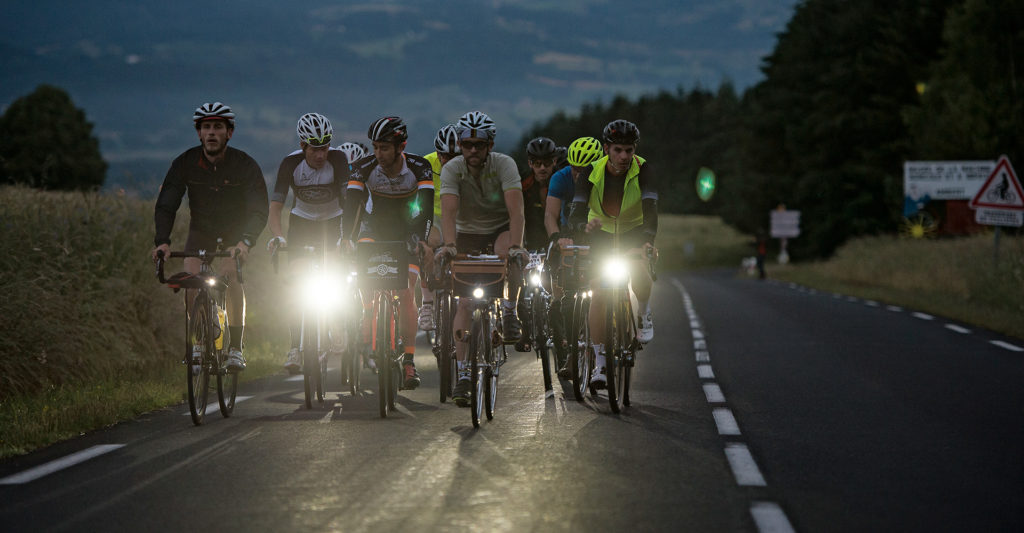
You can see the difference in the photo above. The rider with sunglasses at the front has an Edelux II. His light looks less bright, but it illuminates the road much better. (There are a few more riders with Edelux II lights right behind. The two super-bright lights (second-from-right; left) shine half their beam into the sky and into the eyes of the photographer, yet the road ahead remains in the dark.
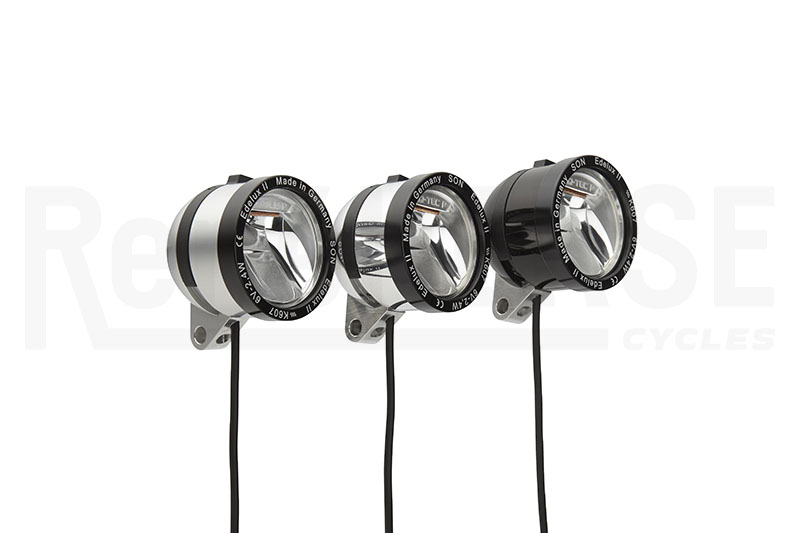
All car headlights use layered beams – it’s required by law. Why don’t more bicycle headlights use them? The answer is cost: The complex reflector takes much R&D to develop – the cost is in the $100,000s – and to work properly, the LED must be located with great precision. For those of us who ride and race at night, we gladly pay a bit more to get a light that illuminates the road evenly. All lights in the Rene Herse program use a layered beam.
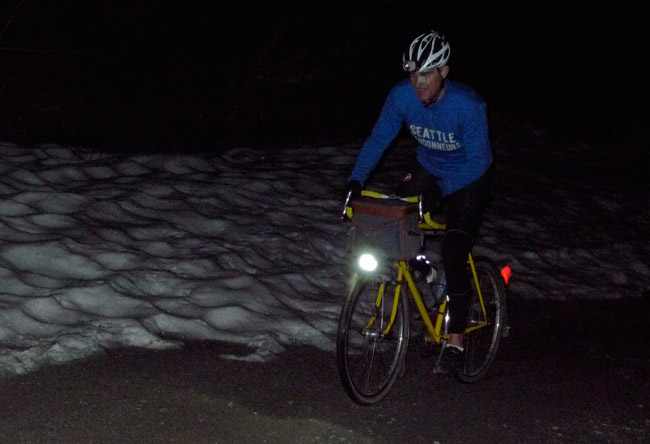
Conclusion: What matters isn’t how many lumens your light puts out, but how brightly and evenly it lights up the road surface. When we descend gravel mountain passes in the middle of the night, we need lights that show what’s ahead without fatiguing our eyes. It’s fair to say that the SON Edelux headlights have revolutionized how we ride our bikes at night. That is why we sell them at Rene Herse Cycles, and why we distribute them to bike shops, too.
Illustrations of beam patterns courtesy of Schmidt Maschinenbau. Photo of rider group: Nicolas Joly


